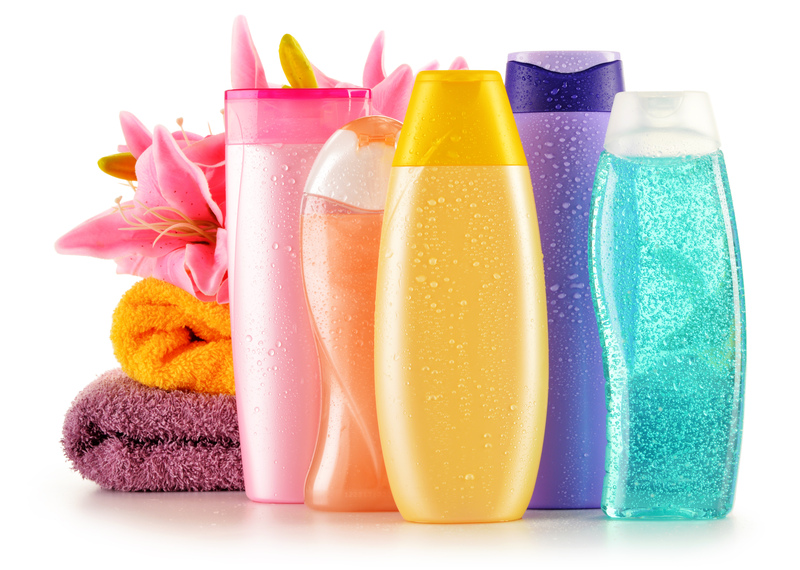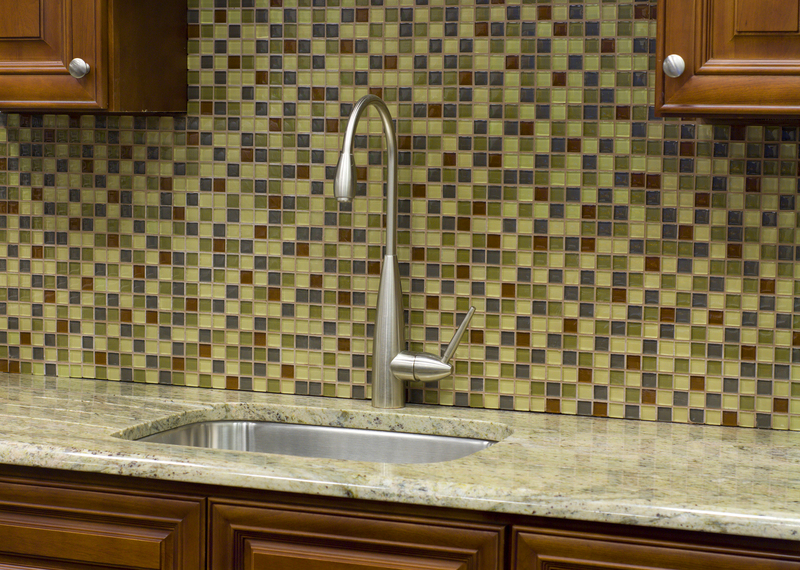Tips for Removing Stubborn Burnt Residue on Stovetops
Posted on 25/05/2025
Tips for Removing Stubborn Burnt Residue on Stovetops
If you love cooking at home, you know that stovetops can quickly accumulate stubborn burnt residue and grime. Even with regular cleaning, tough stains can prove challenging. Removing burnt residue from stovetops is not just about keeping your kitchen looking pristine--it's also essential for kitchen hygiene and appliance longevity. In this comprehensive guide, we'll explore effective tips and methods to remove stubborn burnt residue on stovetops, covering various stove types and all-natural as well as chemical cleaning solutions.
Understanding Stubborn Burnt Residue on Stove Tops
Before diving into cleaning hacks, it's important to understand why burnt-on stains form. Cooking spills, oil splatters, and food particles that are not immediately wiped up can become hard, blackened residue after being exposed to repeated heat cycles. The longer this burnt residue sits, the more stubborn it becomes to remove--especially on glass, ceramic, or traditional coil stovetops.
Common Types of Stovetop Surfaces
- Ceramic and Glass Stove Tops: Smooth and modern, but prone to visible stains.
- Casting Iron or Electric Coil Burners: Classic style, great for even heating, but with nooks where grease hides.
- Induction Stove Tops: Sleek and usually easier to clean but not immune to burnt spills.

Pre-Cleaning Preparation
Before you start your deep cleaning process, follow these pre-cleaning steps:
- Ensure the stove is completely cool to avoid burns.
- Remove any detachable parts: Grates, burner caps, and knobs can make cleaning easier.
- Brush away loose debris with a soft brush or paper towel.
These steps will pave the way for a more effective residue-removal process on your stovetop.
Essential Supplies for Removing Burnt Residue on Stove Tops
You don't need specialty cleaners to tackle tough burnt stains. Most supplies can be found in your kitchen pantry or local store. Here are some essentials:
- Baking Soda
- White Vinegar
- Lemon Juice
- Hydrogen Peroxide
- Plastic scraper or old credit card
- Soft sponge or microfiber cloth
- Dish soap
- Non-abrasive scouring pad
- Razor blade (for glass stovetops only)
- Commercial cleaner (for especially tough stove stains)
Best Tips for Removing Stubborn Burnt Residue from Your Stovetop
1. The Baking Soda Paste Method
This classic method is suitable for most stove types and is both affordable and eco-friendly.
- Mix three parts baking soda with one part water to create a thick paste.
- Spread the paste generously over the burnt residue area.
- Allow the paste to sit for at least 20-30 minutes (longer for very stubborn stains).
- With a soft sponge, gently scrub in circular motions.
- Wipe clean with a damp microfiber cloth.
- Repeat the process if necessary for deep cleaning.
2. Vinegar Solution for Shiny Results
White vinegar's acidity cuts through grease and burnt residue, leaving your stovetop sparkling.
- Pour equal parts white vinegar and water into a spray bottle.
- Spray the solution onto the burnt-on stains.
- Let it sit for 10-15 minutes to loosen the residue.
- For extra cleaning power, sprinkle a little baking soda over the sprayed area and let it fizz for a few minutes.
- Wipe with a soft, damp cloth.
3. Lemon Juice for Natural Degreasing
- Apply fresh lemon juice directly onto the burnt areas.
- Let sit for 5-10 minutes to break down both the stain and any unpleasant odors.
- Wipe away residue with a damp sponge or microfiber cloth.
Tip: Lemon juice not only tackles burnt-on residue but also leaves a fresh scent behind.
4. Steam Cleaning: No Chemicals Needed
If you prefer an entirely non-chemical approach, steam is your ally.
- Fill a pot with water and bring it to a boil on the affected burner.
- Turn off the heat and let the steam circulate over the grime for 10 minutes.
- Remove the pot and wipe the stovetop with a soft cloth. The steam will help soften and lift stubborn gunk.
5. Carefully Using a Razor Blade (For Glass or Ceramic Tops Only)
Persistent burnt residue on glass cooktops sometimes requires targeted action.
- Hold the razor blade at a 45-degree angle, gently scraping away residue.
- Be very careful not to scratch the surface. Always keep the blade flat against the glass.
- Clean away loosened debris with a damp, soft cloth.
Warning: Never use a razor blade on electric coil or painted stovetops, as it may cause permanent damage.
6. Commercial Cleaners for the Most Stubborn Stove Top Stains
Sometimes burnt residue just refuses to come off. In such cases, a commercial stove cleaner specifically formulated for your stovetop material (glass, ceramic, or enamel) can work wonders.
- Read and follow all manufacturer instructions.
- Test on a small, inconspicuous area first to avoid discoloration or damage.
- Use with gloves to protect your skin.
Special Considerations for Different Types of Stove Tops
Ceramic and Glass Stove Tops
- Use only non-abrasive cleaning tools and creams to avoid scratches.
- Avoid using steel wool, as it will permanently etch the surface.
- Razor blades can be used with extreme caution for caked-on residue.
Coil Electric Burners
- Remove coils if possible.
- Do not submerge electrical parts in water. Instead, wipe with a damp sponge.
- Use baking soda paste on the drip pans and allow it to sit before scrubbing.
Gas Stove Tops
- Remove burner grates and caps and soak in hot, soapy water to loosen debris.
- Use a toothbrush or soft-bristle brush to clean around gas nozzles.
- Ensure all parts are completely dry before reassembling and reigniting the burners.
Preventing Future Burnt Residue on Stove Tops
- Wipe up spills immediately: The sooner you clean up, the less likely the mess will burn and stick.
- Use drip trays or liners--especially beneath electric coils or gas burners.
- Perform a regular deep clean: Set a reminder to clean your stovetop at least once a week if you use it often.
- Use lids and splatter guards while cooking to minimize mess.
- Don't overfill pots or pans: Avoid boil-overs that cause sticky residue.

Frequently Asked Questions about Removing Burnt Stovetop Stains
Can I use oven cleaner on my stovetop?
For many stove tops, especially glass and ceramic, oven cleaner is too harsh and can damage the surface. Always use products labeled safe for your particular stove type and avoid caustic chemicals unless absolutely necessary.
What if burnt residue has been there for months?
For extremely old or thick burnt-on stains, you may need to use repeated cycles of a baking soda paste or a targeted razor blade session (on glass tops). In severe cases, a commercial cleaner may be the only solution.
Is it safe to use vinegar on any stovetop?
Vinegar is generally safe for most stove tops, but should be avoided on natural stone or aluminum surfaces as it can etch or tarnish the finish.
Will these cleaning methods remove burnt-on sugar from the stove?
Yes, but burnt sugar can be especially hard to remove when cooled. Steam cleaning, followed by careful scraping with a plastic scraper and use of a baking soda paste, works best for caramelized sugar spills.
Final Words: Achieve a Spotless and Shining Stove Top
Removing stubborn burnt residue from your stovetop can seem daunting, but with patience, the right techniques, and simple household supplies, you'll reclaim your kitchen's shine in no time. Every stove is unique, so tailor your approach based on the surface material. Whether you choose eco-friendly methods such as baking soda and vinegar, or opt for commercial cleaners for the most persistent stains, with these expert tips, you can enjoy a spotless, hygienic, and attractive kitchen workspace every day.
Happy cleaning and happy cooking!





